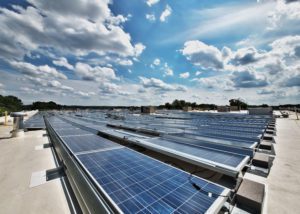If electric vehicles (EVs) are to become common features of the sustainable urban mobility scene, safe and effective charging facilities are needed.
What charging infrastructure is currently in place to charging needs?
Charging infrastructures should be ubiquitous and meet 3 broad categories of needs:
- Long-stop charging overnight at home or in the workplace – 6-8 hours.
- Short-stop charging of 1-2 hours at dedicated facilities in public places like car parks and shopping malls.
- Quick-stop top-ups on long journeys or for intensive use –15-20 minutes.
How many charging modes are there?
Broadly speaking there are four, according to IEC61851-1 standard.
1-Household sockets and charging cables – Mode 1
Plugging a vehicle into a standard household socket is forbidden in France as is it dangerous for users and for property, and most of electric cars do not operate with mode 1.This type of charging is more accurate for bikes (short connexion time as battery is smaller than the car. A car needs more than 10 hours of charge).
Household sockets and charging cables2-Household sockets and charging cables with built-in protection – Mode 2
Like Mode 1, only the earthing wire in the charging cable has built-in protection. Charging mode that has to be used occasionally.
Protection device built into the cable3-Charging station dedicated sockets in dedicated circuits – Mode 3
The vehicle is connected directly to the electrical network via specific socket and plug and a dedicated circuit. A control and protection function is also installed permanently in the installation.
Protection device in the installation, specific recharging station4-Direct current (DC) connection for fast charging – Mode 4
Connecting an EV to the power grid via an external charger will charge the battery, in DC with high current.
Direct current (DC) connection for fast charging – Mode 4How to choose?
The most important parameter is safety when assessing the four modes. Others factors, like cost, efficiency, and feasibility, can then be considered.
Mode 4, which operates at 500V and 125A can be ruled out for domestic charging. Its current is too high.
We will focus only on trying to understand in terms of safety at home, what are the pros and cons of the modes 1, 2 and 3.
What are safety issues with Mode 1?
In Mode 1 the circuit used for charging the EV also supplies other loads. The total current will be too high and the circuit will trip.
When charging with mode 1 you risk:
- The over heating of the socket and cables following an intensive use of several hours if we exceed 2kW.
- Fire or electric injuries in case the electrical installation is obsolete or if certain protective devices are absent.
What are safety issues with Mode 2?
Mode 2 is an improvement of mode 1. The charging cables incorporates protection. But same as for Mode 1, the existing circuit used for charging the EV also supplies other loads. The total current will be too high and the circuit will trip.
You can use Mode 2 – but only in case of emergency.
What are safety issues with Mode 3?
The short answer is: dedicated charging installation. Mode 3 charging stations incorporate monitoring and protection functions.
They also allow load shedding so you can run household appliances at the same time and optimise charging times.
They boast built-in off-peak management and communicate with EVs and the grid. This enables you take a load off the local grid and your electricity bill.
EVs can even store electricity, feeding it back into the grid at peak hours.
Any doubts about the best way to charge your EV? Or just want to know more? Download this white paper.




Conversation
Mode 3 looks the safest solution. How does Schneider Electric’s EVLink Residential Offer relate vis-a-vis these 3 modes?